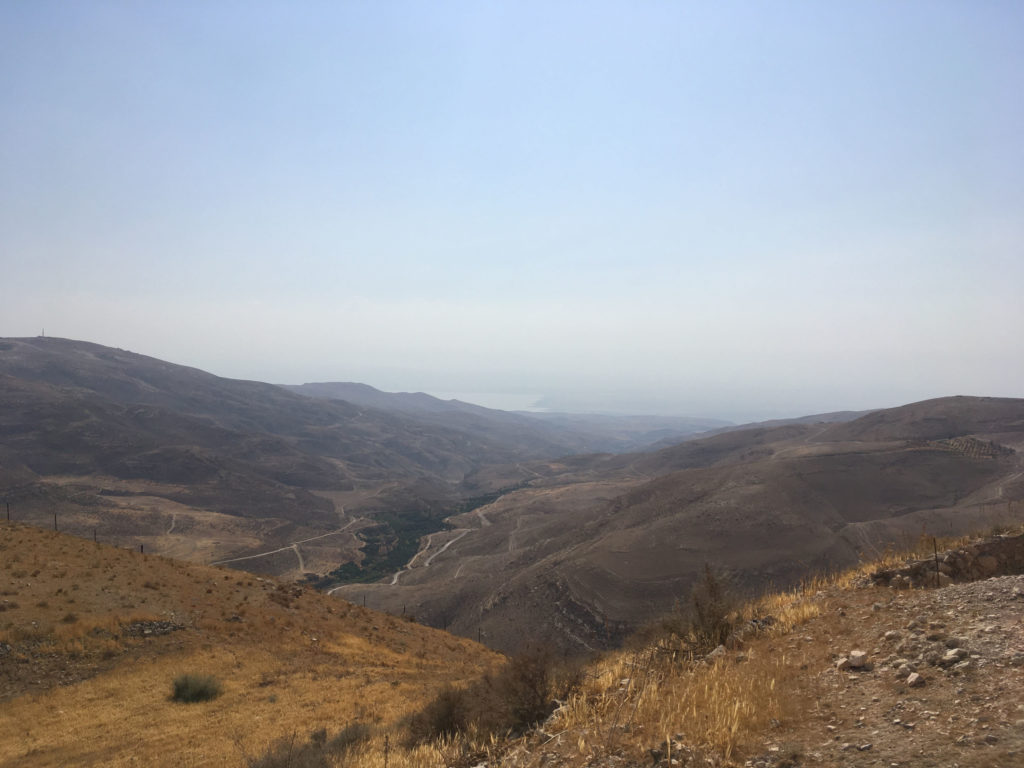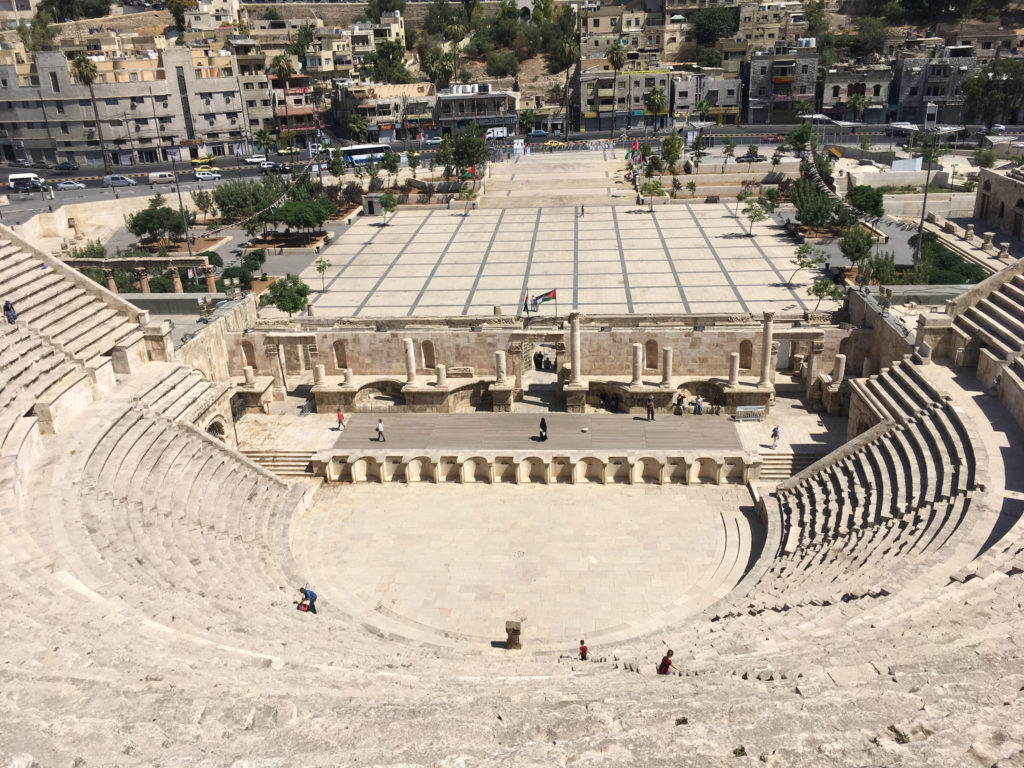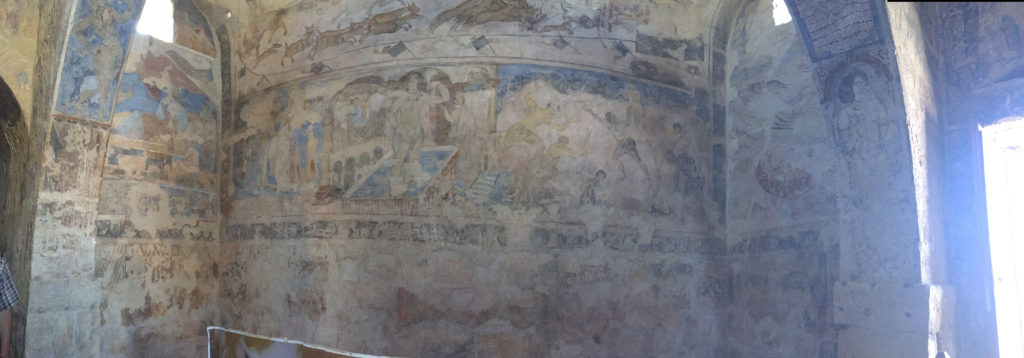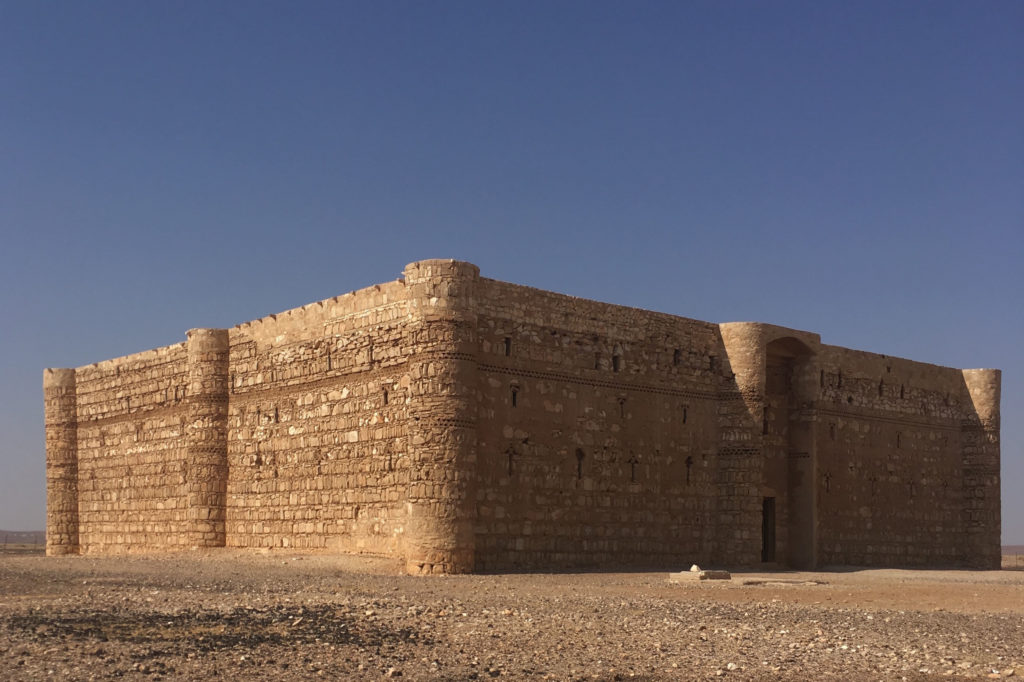by Kaitlyn Specht
 Tuesday July 4th was our first official work day on site. During that day, many of the groups cleared backfill out of previously excavated squares, while others started new squares. New squares have to be laid out so that they measure exactly 5 by 5 meters. We also learned how to do things like taking elevations for the squares that are going to be excavated during the 2017 season.
Tuesday July 4th was our first official work day on site. During that day, many of the groups cleared backfill out of previously excavated squares, while others started new squares. New squares have to be laid out so that they measure exactly 5 by 5 meters. We also learned how to do things like taking elevations for the squares that are going to be excavated during the 2017 season.
Over the course of the next few days, the different groups started to excavate their squares. The re-opened squares spent the week clearing the architecture uncovered last season so that they could continue excavating. Other groups spent the week excavating topsoil and establishing the limits of their squares. In our square, we came across a scorpions while we were excavating, but we managed to avoid disaster by shooing them out of our squares. One of the best parts of being at the site is the view. From here you can see the Dead Sea, the Jordan Valley, and, on a clear day, you can see as far as Jerusalem.
 Thursday was our last day on site for the week, and Saturday was our second field trip. We went to the city of Amman and the Desert Castles. The first place that we visited was the Amman Citadel. The Citadel is home to many different buildings one of which is the Roman Temple of Hercules. All that is left is the podium and some columns that surround it. We were able to get up close to all of the buildings at the Citadel and take lots of pictures!
Thursday was our last day on site for the week, and Saturday was our second field trip. We went to the city of Amman and the Desert Castles. The first place that we visited was the Amman Citadel. The Citadel is home to many different buildings one of which is the Roman Temple of Hercules. All that is left is the podium and some columns that surround it. We were able to get up close to all of the buildings at the Citadel and take lots of pictures!
The next place we visited was the Roman Theater and Odeon. This theater is one of the only buildings left from the Roman occupation in Amman. The theater holds about 6000 people and sits on the side of a hill so you can see down into the city from the top. The Odeon, which is significantly smaller, only holds about 300 hundred people.
Before visiting the Desert Castles, we had lunch at a restaurant in Azraq. They had the best hummus some of us had ever eaten! The first castle we saw was Qasr Azraq. A castle made almost entirely of basalt. This castle was built in the 13th century. We got to explore the castle and even climb to the roof of some of the buildings.
 The second castle we visited was Qusayr Amra. This site was built by a prince in the 8th century and is now a UNESCO World Heritage Site. The walls inside are covered in paintings depicting various activities such as hunting. There are also paintings that depict the story of Jonah and the whale. The ceiling of the bath house shows the zodiac symbols. After visiting the castle, the site guard had tea prepared for us and we got to sit with him and other workers before we moved on to our next site.
The second castle we visited was Qusayr Amra. This site was built by a prince in the 8th century and is now a UNESCO World Heritage Site. The walls inside are covered in paintings depicting various activities such as hunting. There are also paintings that depict the story of Jonah and the whale. The ceiling of the bath house shows the zodiac symbols. After visiting the castle, the site guard had tea prepared for us and we got to sit with him and other workers before we moved on to our next site.
The site of Qasr Kharana was our last stop for the day. The castle was renovated in the early 8th century, but the function of the building is still argued today. The castle has two stories and many different rooms. We were able to explore both stories of the castle but sadly we could not go to the roof. We all had an amazing time and the second field trip was definitely one to remember! 
